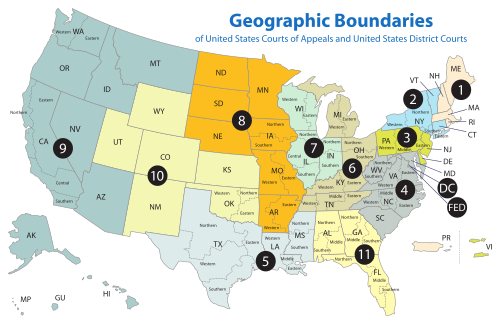| United States District Court for the District of Wyoming | |
|---|---|
| (D. Wyo.) | |
 | |
| Location | Cheyenne |
| Appeals to | Tenth Circuit |
| Established | July 10, 1890 |
| Judges | 3 |
| Chief Judge | Kelly H. Rankin |
| Officers of the court | |
| U.S. Attorney | Darin Smith (interim) |
| U.S. Marshal | Randall P. Huff |
| www | |
The United States District Court for the District of Wyoming (in case citations, D. Wyo.) is the federal district court whose jurisdiction comprises the state of Wyoming and those portions of Yellowstone National Park situated in Montana and Idaho; [1] it is the only federal court district that includes portions of more than one state, creating a possible "Zone of Death" where it would be difficult to prosecute crimes. [a] The court has locations in Cheyenne and Casper.
Contents
- Current judges
- Former judges
- Chief judges
- Zone of death
- Succession of seats
- United States attorneys for the District of Wyoming
- See also
- References
- Footnotes
- External links
Appeals from this court are heard by the United States Court of Appeals for the Tenth Circuit (except for patent claims and claims against the U.S. government under the Tucker Act, which are appealed to the Federal Circuit).
The United States Attorney's Office for the District of Wyoming represents the United States in civil and criminal litigation in the court. As of August 11, 2025, the acting United States attorney is Darin Smith. [3]
